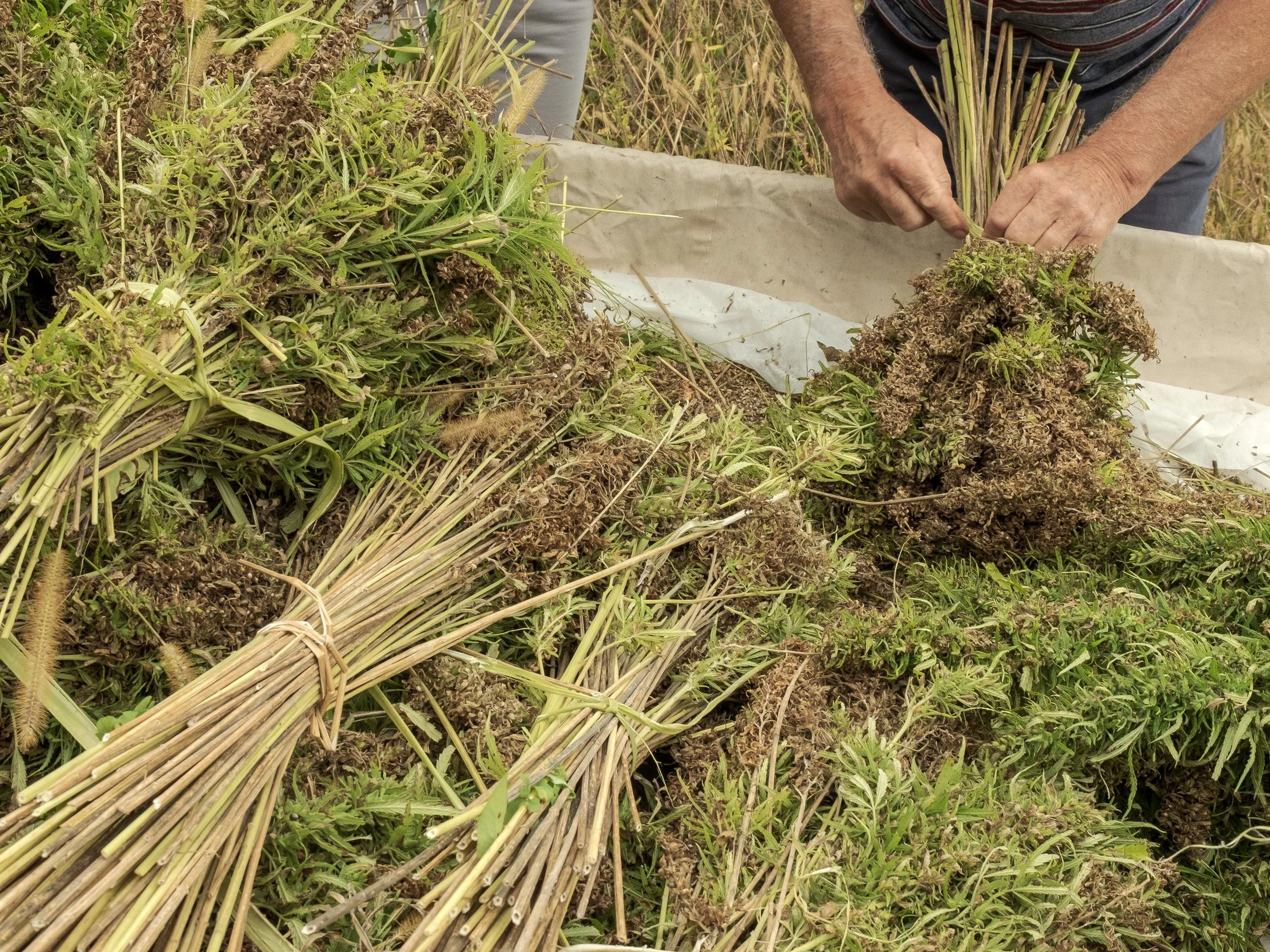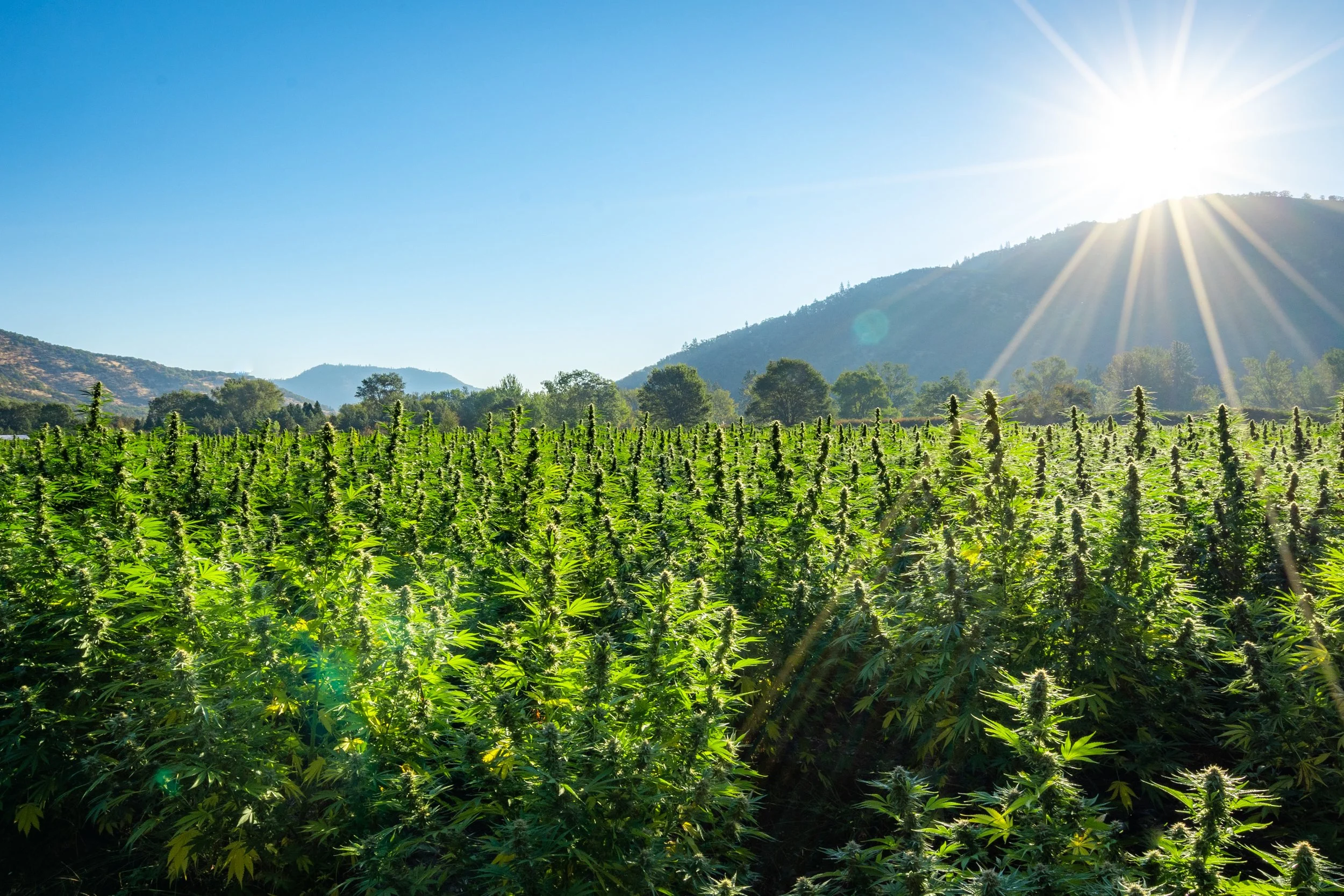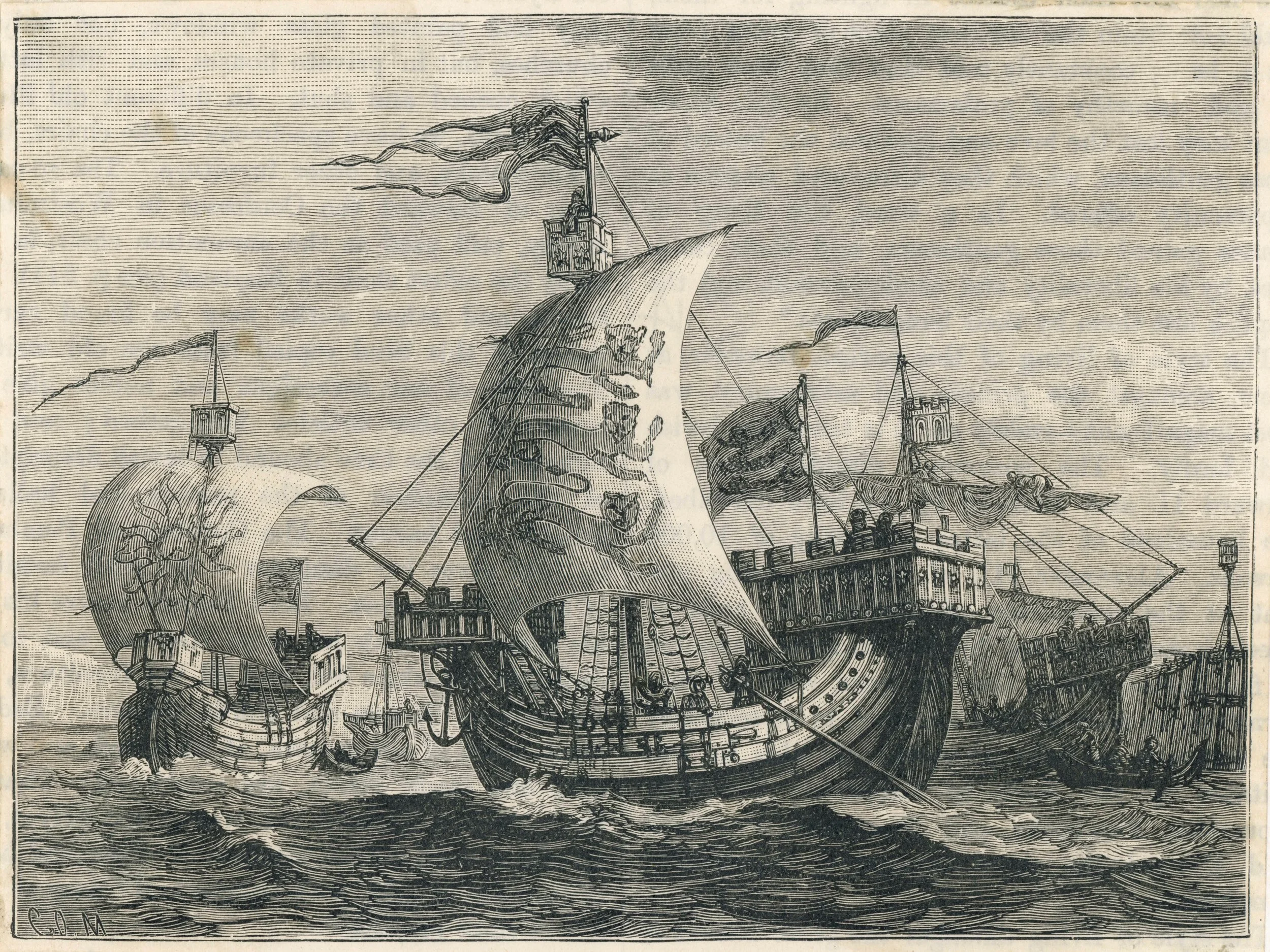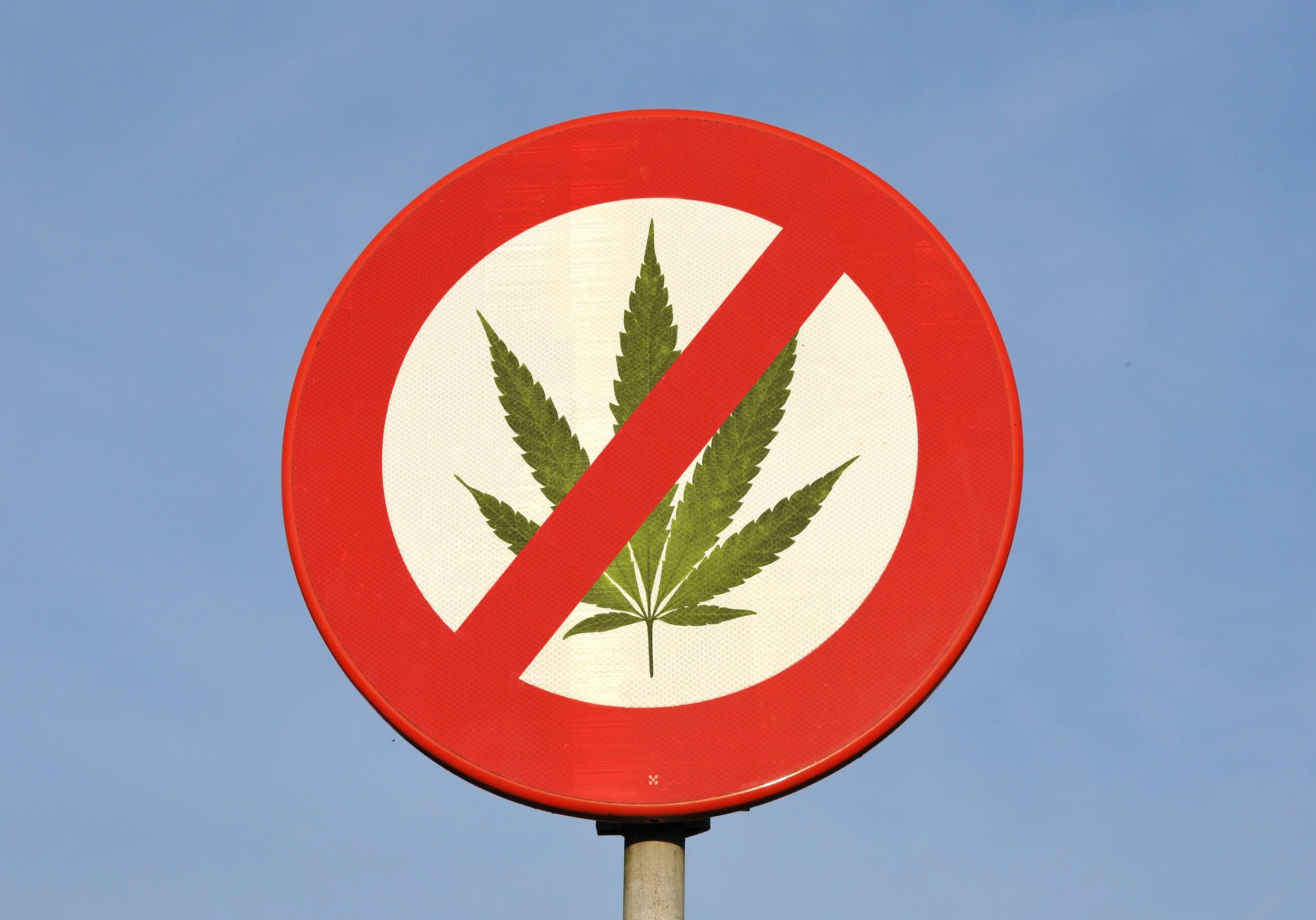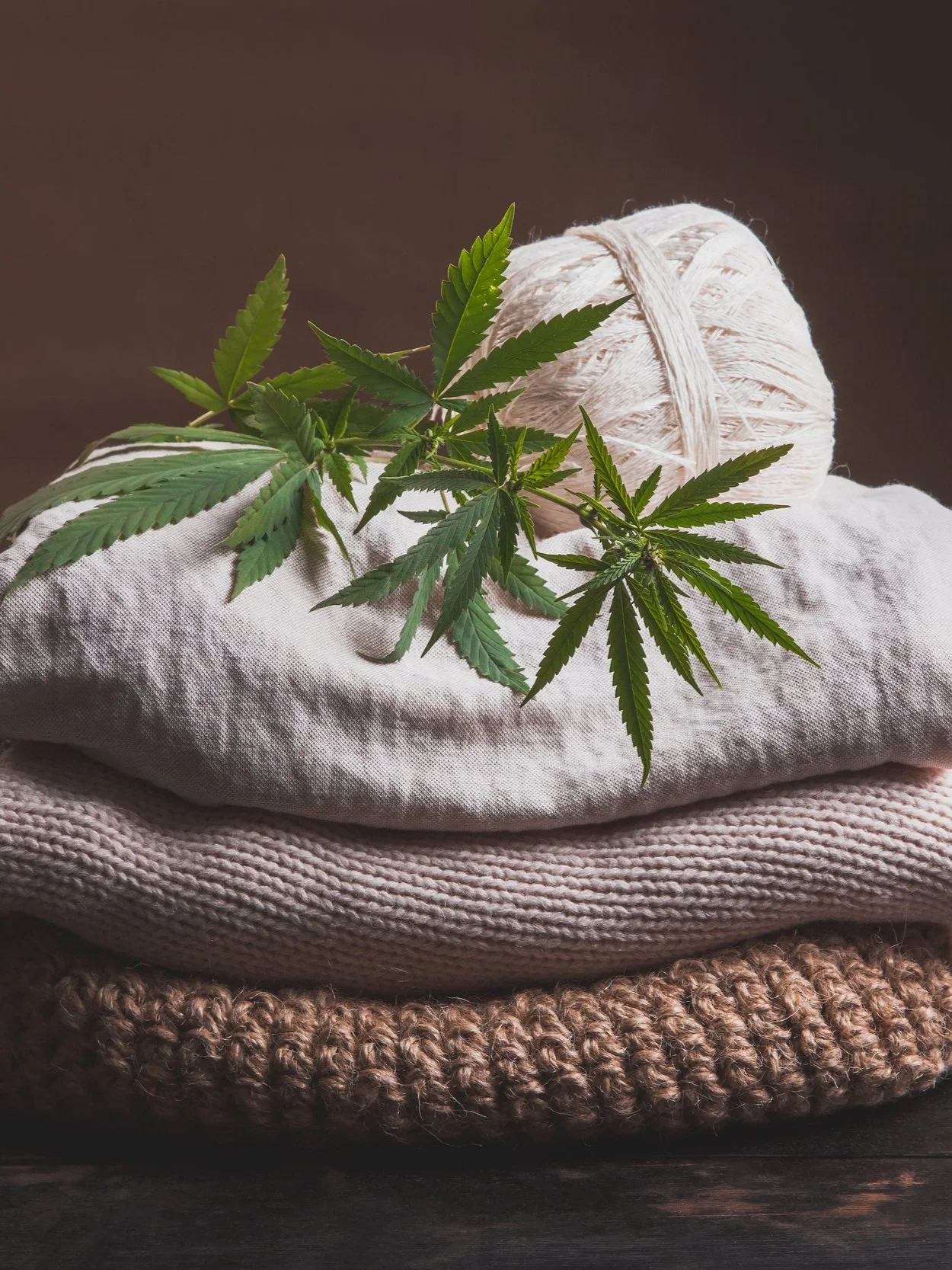Hemp History
Hemp has a rich and fascinating history that spans thousands of years, woven through cultures, continents, and countless uses. As one of the first plants ever cultivated by humans, hemp was prized for its strength, adaptability, and usefulness—providing fibre for clothing and rope, seeds for food and oil, and even materials for early paper-making.
From ancient civilisations in China and Mesopotamia to the sailing ships and colonial economies of Europe, hemp played a vital role in the development of societies around the world. Despite its longstanding value, hemp's story took a dramatic turn in the 20th century, when political and social shifts led to its prohibition and decades of stigma.
Today, hemp is making a global comeback. With growing awareness of its environmental benefits and industrial potential, hemp is being re-embraced as a sustainable crop for the future.
A Brief History of Hemp
Hemp is a versatile plant with numerous uses. It has a rich history spanning millennia. From ancient civilisations to modern times, this plant has played a significant role in human societies
Ancient
Origins
Hemps history traces back thousands of years. It was one of the first cultivated fibre plants with records of its Harvest being dated back approximately 8500 years. Archaeological findings link its origins to ancient Neolithic civilizations in China, evident through hemp imprints discovered on pottery. Throughout the years, hemp served diverse purposes, from ropes and fabrics to medicinal applications.
Colonial
America
Hemp was a vital crop in colonial America, used for clothing, sails, rope, and other essentials. Its importance led some colonial governments to encourage — and even mandate — its cultivation, making it central to the early American economy.
United Kingdom in 14th and 15th Centuries
Historically, Low THC Cannabis Sativa Hemp has deep roots in England, with mandatory hemp cultivation during the reigns of King Henry VIII and Queen Elizabeth I . The fibers were crucial for the national navy, supporting everything from ropes to sails and facilitating British global exploration.
20th Century
Global Ban
In the United States, the 1937 Marijuana Tax Act imposed strict regulations on all cannabis varieties, effectively outlawing hemp despite its low THC content. This led to a sharp decline in its cultivation and use.
Modern
Revival
Recent years have seen a resurgence of interest in Hemp’s many environmental benefits, leading to legalisation in numerous countries for its use in various industries
Hemp In China
Hemp became a widespread commodity in China around 5000–6000 B.C., symbolized by the logogram for hemp (麻 : má), which also means "fibre plant." With a rich history of hemp cultivation and a vast manufacturing network, China is now reviving its traditional production for innovative uses. Understanding China's hemp sector is crucial for the global hemp industry's future and Europe's sector growth.
Although hemp textiles were largely replaced by cotton after the Mongols introduced it, hemp farming persisted, driven by local demand for seeds and fibers for traditional garments. Recently, global demand for CBD products has drawn investors to China's bioindustry, making hemp popular among farmers for its high profit margins. The industry now focuses on textiles and well-being.
Accurate data on China's hemp industry is scarce, but the trend shows increasing cultivation. In 2019, about 66,700 hectares were dedicated to hemp, with over 50% for fiber hemp in Heilongjiang province. Another 11,500 hectares in Yunnan province were for cannabinoid production. Key cultivation areas also include Shandong, Anhui, Gansu, and Jilin provinces. Regulations currently exist only in Heilongjiang and Yunnan, with THC content capped at 0.3%.
Hemp in the UK
Historically, Low THC Cannabis Sativa Hemp has deep roots in England, with mandatory hemp cultivation during the reigns of King Henry VIII and Queen Elizabeth I . The fibers were crucial for the national navy, supporting everything from ropes to sails and facilitating British global exploration
WWII
While hemp usage declined in the 20th century, World War II necessitated a resurgence of hemp in the UK to address the shortage of fibers for military needs, such as rope. However, this soon came to a halt following the global ban in 1961.
Misuse Of Drugs Act 1971
In 1961, the United Nations Single Convention on Narcotic Drugs in 1961 was passed, enforcing a global ban on the entire Cannabis genus. Following this, the UK passed the Misuse of Drugs Act 1971, which imposed significant restrictions. Although legal cultivation resumed in the United Kingdom in 1993, the hemp flower remains prohibited as a controlled substance.
Hemp in Colonial America
The history of hemp in colonial America is deeply intertwined with the agricultural, economic, and industrial development of the colonies. Hemp, was highly valued for its versatility and utility in producing materials like rope, fabric, paper, and sails. English colonists brought hemp to North America in the early 1600s, recognizing its potential as a critical resource for both everyday life and economic growth.
The colonial governments encouraged, and sometimes mandated, hemp cultivation due to its strategic importance. In 1619, the Virginia Assembly passed a law requiring every farmer to grow hemp, and similar laws were enacted in Massachusetts and Connecticut. This was largely driven by its necessity for producing ship sails, ropes, and rigging, which were essential for trade and naval power. Hemp was also widely used to make paper for newspapers and legal documents, including the first drafts of the Declaration of Independence, as well as sturdy textiles for clothing and sacks.
Hemp played a vital role in the transatlantic economy, supplementing imported hemp from Europe, particularly Russia. American-grown hemp was traded within the Atlantic economy, creating economic interdependence between the colonies and Europe. Despite its importance, cultivating hemp was labor-intensive, involving retting (rotting to extract fibers), breaking, and combing the fibers, which required significant human effort. In many areas, other cash crops like tobacco took precedence due to their higher profitability
As the 18th century progressed, hemp's dominance began to decline. Competition from other fiber crops like cotton, combined with the invention of the cotton gin in 1793, shifted agricultural priorities. Over time, the economic significance of hemp diminished further due to changing industrial demands and its eventual association with psychoactive cannabis.
20th Century Ban on Cannabis
The 20th-century ban on cannabis, including hemp, was a gradual process. While hemp had been widely used for centuries as a valuable industrial crop, its association with psychoactive cannabis (marijuana) and growing cultural stigmatization led to its prohibition. The early 1900s saw the rise of recreational marijuana use, particularly among Mexican immigrant communities, which became a target of racial prejudice. Sensationalist media, including newspapers owned by William Randolph Hearst, published exaggerated stories linking cannabis use to violence and moral decay, fueling public fears and stigma.
-
Cannabis began to face increasing regulation in the early 20th century. The Pure Food and Drug Act of 1906 required accurate labeling of cannabis in medicines, marking one of the first federal efforts to control its use. By the 1920s and 1930s, individual states had enacted laws banning or restricting cannabis, often conflating industrial hemp with psychoactive marijuana. This regulatory environment set the stage for more comprehensive federal control.
-
A pivotal moment came with the Marihuana Tax Act of 1937, which effectively criminalized cannabis at the federal level. While the law did not outright ban cannabis, it imposed heavy taxes and strict regulations on its cultivation, possession, and distribution, making it nearly impossible for farmers to grow hemp legally. The act was largely driven by economic and political interests, including lobbying by the emerging synthetic fiber industry, which saw hemp as competition, and by Hearst, whose paper mills faced potential competition from hemp-based paper production.
-
World War II briefly revived hemp production under the "Hemp for Victory" campaign, as the U.S. government encouraged farmers to grow hemp for rope, fabric, and other wartime necessities. However, after the war ended, hemp cultivation sharply declined due to the lingering restrictions and the availability of synthetic alternatives.
-
In 1970, the Controlled Substances Act classified all forms of cannabis, including industrial hemp, as a Schedule I substance, officially outlawing its production and use.
The Controlled Substances Act (CSA) of 1970 was a landmark piece of legislation in the United States that solidified the prohibition of cannabis, including industrial hemp, and established the framework for drug regulation that remains in place today. Passed as part of President Richard Nixon's broader "War on Drugs," the CSA categorized drugs into five schedules based on their potential for abuse, medical value, and safety.
1. Classification of Cannabis
Under the CSA, cannabis was designated as a Schedule I drug, the strictest classification. This designation meant that cannabis, including its industrial hemp variant, was considered to have:
A high potential for abuse,
No accepted medical use in treatment,
A lack of accepted safety for use under medical supervision.
This classification grouped cannabis alongside drugs like heroin and LSD, despite significant evidence of its historical medicinal and industrial uses. The inclusion of cannabis as a Schedule I substance effectively banned its production, sale, and use at the federal level, even for non-psychoactive industrial hemp.
2. Impact on Hemp
The CSA made no distinction between industrial hemp and psychoactive cannabis (marijuana), despite the fact that hemp contains only trace amounts of THC (tetrahydrocannabinol), the compound responsible for marijuana’s psychoactive effects. This lack of distinction severely impacted the hemp industry, as farmers could no longer legally cultivate hemp without navigating an impractical and highly restrictive regulatory framework. Importantly, this policy ignored hemp’s long history as an industrial crop used to produce textiles, rope, paper, and other products.
3. Political Context
The CSA was part of Nixon's broader effort to combat drug use, which he framed as a major social and political issue. However, historians have argued that the "War on Drugs" was heavily influenced by political and racial motives. According to aides from the Nixon administration, targeting cannabis allowed the government to disrupt communities of color and anti-war activists, who were perceived as political threats. The CSA provided a legal mechanism to criminalize cannabis use and heavily police these groups.
4. Suppression of Research
One of the most significant consequences of the CSA was its suppression of cannabis-related research. The Schedule I classification made it extraordinarily difficult for researchers to study cannabis’s potential medical benefits, as they were required to obtain special licenses and permissions from federal agencies. This created a scientific bottleneck, delaying progress on understanding the plant’s therapeutic properties and industrial applications.
The CSA’s impact on cannabis and hemp persisted for decades. Industrial hemp cultivation remained illegal in the United States until the passage of the 2014 Farm Bill, which allowed limited pilot programs for hemp farming. This was followed by the 2018 Farm Bill, which officially removed hemp (defined as cannabis containing less than 0.3% THC) from the Schedule I list, paving the way for its commercial cultivation and the resurgence of the hemp industry.
The CSA laid the foundation for the strict prohibition of cannabis, shaping public perception and policy around the plant for much of the 20th and early 21st centuries. It also sparked ongoing debates about drug policy reform, particularly as new evidence emerged regarding cannabis’s medical benefits and the economic potential of industrial hemp.
Hemps Modern Resurgance
Hemp's modern resurgence is a remarkable turnaround from decades of prohibition, driven by evolving legislation, environmental awareness, and growing demand for sustainable and versatile products. After being effectively outlawed in the mid-20th century under the Controlled Substances Act (CSA) of 1970, hemp has re-emerged as a vital crop with a wide range of applications.
The first signs of hemp’s comeback appeared in the late 20th century when activists and industrial advocates began campaigning for its reintroduction. As awareness grew about hemp’s non-psychoactive nature and its historical importance as an industrial crop, efforts to differentiate it from psychoactive cannabis gained momentum. In the 1990s, several states began allowing limited hemp research and cultivation under strict conditions, focusing on understanding its agricultural and industrial potential while navigating federal restrictions.
Hemp’s modern resurgence owes much to pivotal legislative changes in the 21st century. The 2014 Farm Bill marked a turning point by allowing states to establish pilot programs for hemp research and limited cultivation. It was the first federal recognition of hemp’s distinction from psychoactive cannabis and laid the groundwork for its commercial comeback. The 2018 Farm Bill was a transformative moment, officially removing hemp (defined as cannabis containing less than 0.3% THC) from the Controlled Substances Act’s Schedule I list. This legislation legalized hemp cultivation, processing, and sale at the federal level, ushering in a new era for the U.S. hemp industry.
Hemp’s resurgence has been fuelled by its versatility and potential to address modern challenges. It is a sustainable crop that grows quickly, requires fewer pesticides and herbicides than many others, and improves soil health through its deep root system. Hemp is used across numerous industries, including textiles, biodegradable plastics, biofuels, construction (e.g., hempcrete), paper, food products, and health supplements like CBD oil. Additionally, hemp’s ability to absorb large amounts of carbon dioxide during growth makes it an appealing crop for combating climate change.
The global hemp industry has experienced explosive growth since legalization, with the U.S. rapidly becoming a key player. In 2018 alone, the U.S. hemp market grew to over $1 billion, driven largely by the demand for CBD products. By 2024, the global hemp market was projected to reach $18 billion, encompassing sectors such as wellness, textiles, and industrial manufacturing. Other countries, including Canada, China, and parts of Europe, have also embraced hemp production, creating a competitive international market. For example, China leads in hemp fiber production, while Europe has focused on hemp-based bioplastics and construction materials.
Despite its growth, the hemp industry faces challenges. Farmers and producers must navigate regulatory uncertainties, particularly around THC limits and compliance testing. Market saturation in some sectors, like CBD, has led to price fluctuations and economic instability for growers. Nevertheless, hemp’s potential remains vast. Its applications in sustainable construction, renewable energy, and biodegradable materials align with the global push for greener industries. Research into hemp’s use in advanced technologies, such as nanomaterials and energy storage, continues to unlock new possibilities.
Hemp’s modern resurgence is not just about industry; it is also tied to shifting cultural perceptions around cannabis. As more states and countries legalize cannabis for medical and recreational use, the stigma surrounding hemp has diminished. Advocacy groups, farmers, and entrepreneurs are working to educate the public about hemp’s benefits, ensuring its place as a cornerstone of sustainable agriculture and industry.

